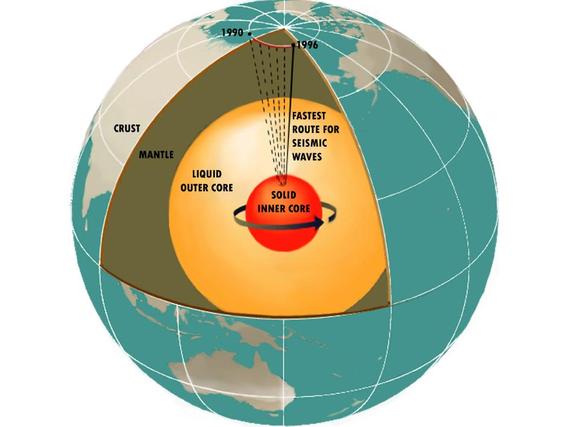New research from the European Association of Geochemistry indicates that the Earth's core contains large deposits of sulphur, estimated to be upwards of 8.5 x 1018 tonnes. Published in the Geochemical Perspectives Letters in June 2015, this estimation far surpasses the current amount of sulphur on the Earth's surface and based on recent estimations, is around 10 percent of the Moon's mass.
This is the first time geologists have found any conclusive data for sulphur in the Earth's core, adding more support to the theory that the Moon was formed from a collision between a young Earth and a large planet-sized object.
Contemporary speculation has held that the Earth's core is too light to be made of only iron and nickel. It was assumed that the core held a mix of a number of elements including silicon, carbon, nitrogen, and sulphur.
Due to the depth of the core, which lies 2,900 kilometers (1,802 miles) underground it was impossible to confirm its composition directly. However researchers used the clues lefts over the traumatic formation of our Moon to collect and confirm the content of the Earth's core.
Often referred to as The Big Splash, the formation of our moon took place over 4.5 billion years ago when an astronomical body the size of Mars collided with a still young Earth. This impact melted the Earth's mantel, allowing sulphur-rich liquid to form in the Earth's mantle, crust, as well as being ejected into space. The debris spewed into space then cooled to form the moon.
Researches were able to compare ratios of isotopes, which are atoms of the same element with slightly different structures, in the mantle to meteorites believed to match the Earth's original composition.
Drawing a conclusive measure of sulphur however is a challenge due to the variability in the mantle's composition. The solution? Researchers decided to analyze copper from the Earth's mantle and crust, which is often bound to sulphur.
"We chose copper, because it is a chalcophile element, which means it prefers to be in sulphide-rich material - so is a good element to trace the fate of sulphur on Earth. Generally, where there is copper, there is sulphur; copper gives us a proxy measurement for sulphur," Professor Frédéric Moynier of the Institut de Physique du Globe in Paris stated.
Divided into three stages, researchers first estimated the isotopic composition of copper in the Earth's mantle and core, then estimated the composition of isotopic copper in the Earth before The Big Splash. Finally they estimated the isotopic signatures after the impact drained sulphur-rich liquid from the Earth's core.
Isotope comparisons and additional sampling will continue to expand our knowledge of Earth, the moon, as well as the formation of our solar system.
